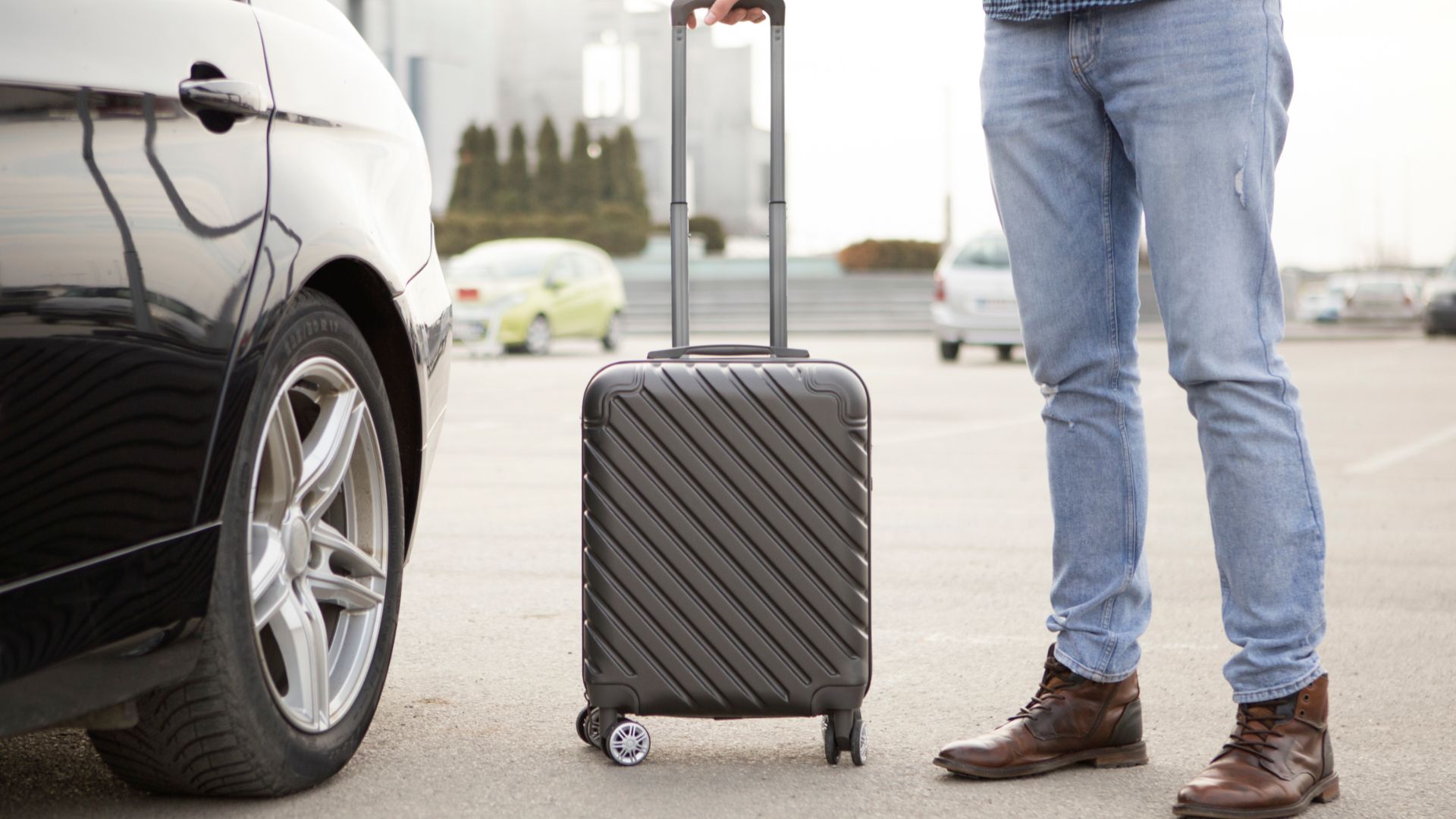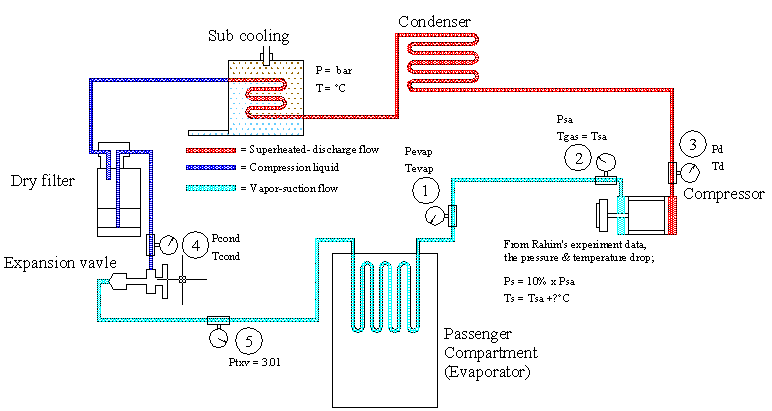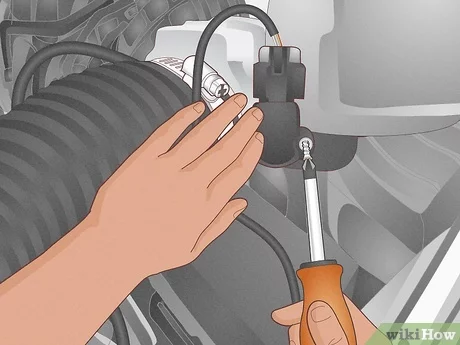In California, the at-fault driver’s insurance typically covers the cost of a rental car for the victim. This process depends on the insurance policy and claim approval.
Navigating rental car costs after an accident can be confusing. In California, if you’re not at fault, the at-fault driver’s insurance should cover your rental car expenses. This ensures you remain mobile while your vehicle is repaired or replaced. It’s essential to communicate promptly with both insurance companies to expedite the process.
Always keep detailed records of all related expenses and communications. Understanding your rights and insurance policies can help streamline this process, ensuring you face minimal disruptions. This knowledge can save time and reduce stress during an already challenging period.

Credit: www.eastonlawoffices.com
Introduction To Car Accidents And Liability In California
Car accidents can be stressful. Understanding the rules helps. In California, liability determines who pays for damages. This includes rental car costs.
Navigating After An Accident
After an accident, stay calm. Ensure everyone’s safety first. Call emergency services if needed. Exchange information with the other driver. This includes names, contact info, and insurance details.
Take photos of the accident scene. Document vehicle damage and positions. Report the accident to your insurance company promptly.
Basics Of Fault In Car Accidents
California follows a fault-based system. This means the at-fault driver is responsible for damages. Determining fault involves investigating the accident. Police reports and witness statements help.
If you are not at fault, you may not pay for the rental car. The at-fault driver’s insurance should cover it. Always check with your insurance provider for specifics.
| Step | Action |
|---|---|
| 1 | Ensure safety |
| 2 | Exchange information |
| 3 | Take photos |
| 4 | Report to insurance |
- Stay calm
- Ensure safety
- Exchange information
- Take photos
- Report to insurance

Credit: barrypgoldberg.com
California’s At-fault Insurance System
California follows an at-fault insurance system. This means the driver who caused the accident must pay. This includes damages and injuries. The at-fault driver’s insurance company handles the costs. This system affects rental car payments too.
How Fault Is Determined
Fault is determined by evidence. This includes police reports and witness statements. Insurance companies also review the damage. They consider traffic laws and driver behavior.
| Evidence Type | Description |
|---|---|
| Police Reports | Provide details of the accident |
| Witness Statements | Offer third-party perspectives |
| Damage Assessment | Shows the extent of vehicle damage |
| Traffic Laws | Helps identify violations |
| Driver Behavior | Includes actions like speeding |
Impact On Insurance Claims
If you are at fault, your insurance pays for the rental car. This is part of the liability coverage. The rental car is for the other driver. Your insurance might also cover your own rental car. This depends on your policy.
If you are not at fault, the other driver’s insurance pays. They cover your rental car while your vehicle is repaired.
- At-Fault Driver: Pays for the other driver’s rental car.
- Not At-Fault Driver: Gets rental car coverage from the at-fault driver’s insurance.
Always check your insurance policy. Understand what is covered. This helps avoid surprises.
Covering Rental Car Costs: Who Pays?
Accidents can be stressful. Not only do you have to deal with vehicle repairs, but you also need a way to get around in the meantime. So, who pays for the rental car in California if you are at fault?
Roles Of Insurance Policies
Insurance policies play a key role in covering rental car costs. If you are at fault, your liability insurance usually covers the rental car for the other driver. Here are some common types of insurance:
- Liability Insurance: Covers the other driver’s rental car.
- Collision Coverage: May cover your rental car costs.
- Comprehensive Coverage: Covers non-accident damages to your car.
Understanding Rental Coverage
Rental coverage is an extra feature in many insurance policies. This coverage helps you pay for a rental car if your vehicle is being repaired. Here’s a breakdown:
| Insurance Type | What It Covers |
|---|---|
| Liability | Other driver’s rental car |
| Collision | Your rental car (if added) |
| Comprehensive | Non-accident damages |
Check if your policy includes rental coverage. If not, you may need to pay out-of-pocket.
The Role Of Collision Coverage
Understanding collision coverage helps in car accident situations. This coverage can save you from large bills. It covers the costs of fixing your car. It also covers rental car fees.
Opting For Collision Coverage
Collision coverage is optional in California. Some people choose it for extra protection. This coverage helps pay for repairs after an accident. It also covers rental car costs while your car is fixed.
Here are some benefits of opting for collision coverage:
- Covers car repairs after an accident.
- Pays for rental cars while your car is in the shop.
- Reduces out-of-pocket expenses.
Claiming Collision Benefits
To claim collision benefits, follow these steps:
- Report the accident to your insurance company.
- Provide details about the damage.
- Get an estimate for repairs.
- Ask for a rental car if needed.
Collision coverage pays for the rental car. You won’t pay out of pocket.
Liability Insurance: The At-fault Driver’s Responsibility
In California, liability insurance is crucial for drivers. It’s designed to cover costs if you cause an accident. This includes damage to another vehicle and rental car expenses for the other driver.
Minimum Requirements In California
California law has set minimum liability insurance requirements. These requirements ensure all drivers can cover basic accident costs. The minimum coverage includes:
- $15,000 for injury or death of one person
- $30,000 for injury or death of more than one person
- $5,000 for property damage
These minimums may not cover all damages in a severe accident. So, many drivers opt for higher coverage. Remember, liability insurance also covers the rental car costs for the other party.
Insurance Claims Process
The insurance claims process begins after an accident. The at-fault driver must report the incident to their insurer. The insurance company then investigates the accident.
If the at-fault driver’s liability is confirmed, their insurance pays for the damages. This includes the rental car costs for the other driver. The process usually involves these steps:
- Report the accident to the insurance company
- Provide necessary documentation and details
- Insurance company investigates the accident
- Insurance company determines fault and coverage
- Payment for damages, including rental car costs, is issued
Understanding these steps can help smooth out the claims process. Ensure you have all documents ready to avoid delays.
| Step | Description |
|---|---|
| 1 | Report the accident to the insurance company |
| 2 | Provide necessary documentation and details |
| 3 | Insurance company investigates the accident |
| 4 | Insurance company determines fault and coverage |
| 5 | Payment for damages, including rental car costs, is issued |
Dealing With Uninsured Or Underinsured Drivers
Accidents with uninsured or underinsured drivers can be stressful. They often leave you wondering about rental car costs. Understanding your options in California helps you stay prepared.
Uninsured Motorist Protection
Uninsured Motorist Protection (UMP) is crucial in these situations. UMP covers damages when the at-fault driver lacks insurance. This coverage can also handle rental car expenses.
- Check your policy for UMP coverage.
- Ensure your UMP includes rental car reimbursement.
With UMP, you won’t need to worry about rental costs. It provides peace of mind after an accident.
Legal Recourse Options
If UMP is not available, consider legal recourse. California law allows you to sue the at-fault driver. This can cover your damages and rental car fees.
Consulting a lawyer can be beneficial. They help navigate the legal process and increase your chances of success.
| Option | Details |
|---|---|
| Uninsured Motorist Protection | Covers damages and rental car costs. |
| Legal Recourse | Sue the at-fault driver for compensation. |
Understanding your options helps you stay prepared. Protect yourself with the right insurance and legal advice.
Rental Reimbursement Coverage: A Closer Look
Understanding rental reimbursement coverage is essential. It helps if your car is in an accident. This coverage pays for a rental car. But, it depends on your insurance policy and the at-fault driver’s policy.
Benefits Of Additional Coverage
Rental reimbursement coverage has many benefits. Here are some key advantages:
- Convenience: You get a rental car quickly.
- Cost-effective: Saves you money on rental fees.
- Peace of mind: No stress about transport.
Having this coverage makes life easier. You won’t need to worry about rental costs.
Limitations And Exclusions
Rental reimbursement coverage also has limitations. Not everything is covered. Here are some common exclusions:
- Daily limits: There is a daily rental limit.
- Time limits: You can use it for a limited period.
- Vehicle type: It may not cover luxury cars.
Always read your insurance policy carefully. Understand what is included and excluded. This helps you avoid surprises.
Here is a quick comparison:
| Coverage Aspect | Details |
|---|---|
| Daily Limit | Usually $30-$50 per day |
| Time Limit | Typically 30 days |
| Vehicle Type | Standard cars only |
Knowing these details helps you make informed decisions. Always check with your insurance provider for specifics.
The Legal Perspective: Seeking Compensation
Understanding who pays for a rental car after an accident in California can be confusing. The at-fault driver’s responsibility often includes covering rental car costs. Knowing your legal options helps you seek compensation effectively.
Filing A Lawsuit
If the at-fault driver refuses to pay, you might need to file a lawsuit. Filing a lawsuit can force the at-fault driver to cover your rental car expenses. This legal process involves several steps:
- Consult a personal injury lawyer.
- Gather all necessary evidence.
- File the claim in court.
- Attend court hearings.
- Await the judge’s decision.
Being prepared helps your case move smoothly. A lawyer can guide you through each step. They will ensure you have the best chance of success.
Negotiating With Insurance Companies
Often, you can negotiate with insurance companies for compensation. Insurance companies aim to minimize their payouts. You must present a strong case.
| Step | Description |
|---|---|
| Contact Insurance | Notify the at-fault driver’s insurance company. |
| Provide Evidence | Submit accident reports and rental receipts. |
| Negotiate Terms | Discuss fair compensation amounts. |
| Settlement Agreement | Sign an agreement if terms are acceptable. |
Negotiation can be quicker than a lawsuit. It also avoids court fees. Having strong evidence increases your chances of a fair settlement.
Practical Tips For Managing Rental Car Expenses
Dealing with rental car expenses can be stressful, especially in California. Knowing some practical tips can help ease this burden. Here are some effective strategies to manage rental car expenses efficiently.
Choosing The Right Rental
Picking the right rental car is crucial. Assess your needs before booking a car. Choose a vehicle that suits your requirements, not one that looks fancy.
- Size matters: A smaller car usually costs less.
- Fuel efficiency: Opt for cars with better gas mileage to save on fuel costs.
- Insurance: Check if your credit card or existing car insurance covers rentals.
Pro Tip: Book in advance to get the best rates and more choices.
Negotiating Rental Rates
Don’t hesitate to negotiate rental rates. Many companies are open to discussions.
- Compare prices: Use websites to compare rates from different companies.
- Membership discounts: Utilize memberships like AAA for potential discounts.
- Corporate rates: Ask about corporate rates if you work for a large company.
Pro Tip: Renting for a longer period often results in a lower daily rate.
Managing rental car expenses is easier with these practical tips. Choose wisely and negotiate effectively to save money.

Credit: rentcarla.com
Conclusion: Safeguarding Your Rights Post-accident
After an accident, understanding your rights is crucial. Knowing who pays for a rental car in California can save you money and stress. This ensures you get back on the road quickly.
Recap Of Key Points
The at-fault driver’s insurance usually covers rental car costs. You must document all accident details for a smooth claim process. Always communicate with your insurance company and the at-fault driver’s insurer.
- At-fault driver’s insurance: Covers rental car costs in most cases.
- Documentation: Keep detailed records of the accident.
- Communication: Stay in touch with both insurance companies.
Final Thoughts On Navigating Car Rentals And Insurance
Understanding your insurance policy helps. Know what it covers, especially for rentals. Ask questions and read the fine print.
If the at-fault driver’s insurance delays, your insurer might help. They can seek reimbursement later. Be proactive and stay informed. This ensures you don’t pay out of pocket unnecessarily.
Consider getting rental car coverage as an add-on. This provides extra protection and peace of mind.
| Step | Action |
|---|---|
| 1 | Report the accident |
| 2 | Contact both insurers |
| 3 | Document everything |
| 4 | Follow up regularly |
Following these steps ensures a smoother process. You get your rental car covered, and you avoid extra costs.
Frequently Asked Questions
Does An At-fault Driver Pay For Rental In California?
Yes, an at-fault driver’s insurance typically pays for the rental car of the victim in California. Ensure you have proper documentation.
Do You Have A Right To A Comparable Rental Car After A Car Accident In California?
Yes, you have the right to a comparable rental car after a car accident in California. Your insurance or the at-fault party’s insurance should cover the cost.
How Does Car Insurance Work When You Are Not At Fault In California?
In California, the at-fault driver’s insurance pays for damages. You can also use your own collision coverage.
Is Liability Insurance Included In Car Rental In California?
Liability insurance is typically included in car rentals in California. Always confirm coverage details with the rental company.
Who Pays For A Rental Car In California?
The at-fault driver’s insurance typically covers the rental car costs.
Can I Get A Rental Car After An Accident?
Yes, the at-fault driver’s insurance usually provides a rental car.
Is Rental Car Covered By Insurance?
Yes, the at-fault driver’s insurance often covers rental car expenses.
How Long Can I Keep The Rental Car?
You can keep it until your car is repaired or replaced.
Conclusion
Determining who pays for a rental car in California depends on fault and insurance coverage. Always check your policy details. Understanding these factors can save time and stress during an accident. Consult with your insurance provider for specific guidance. Stay informed and prepared for any driving situation.



